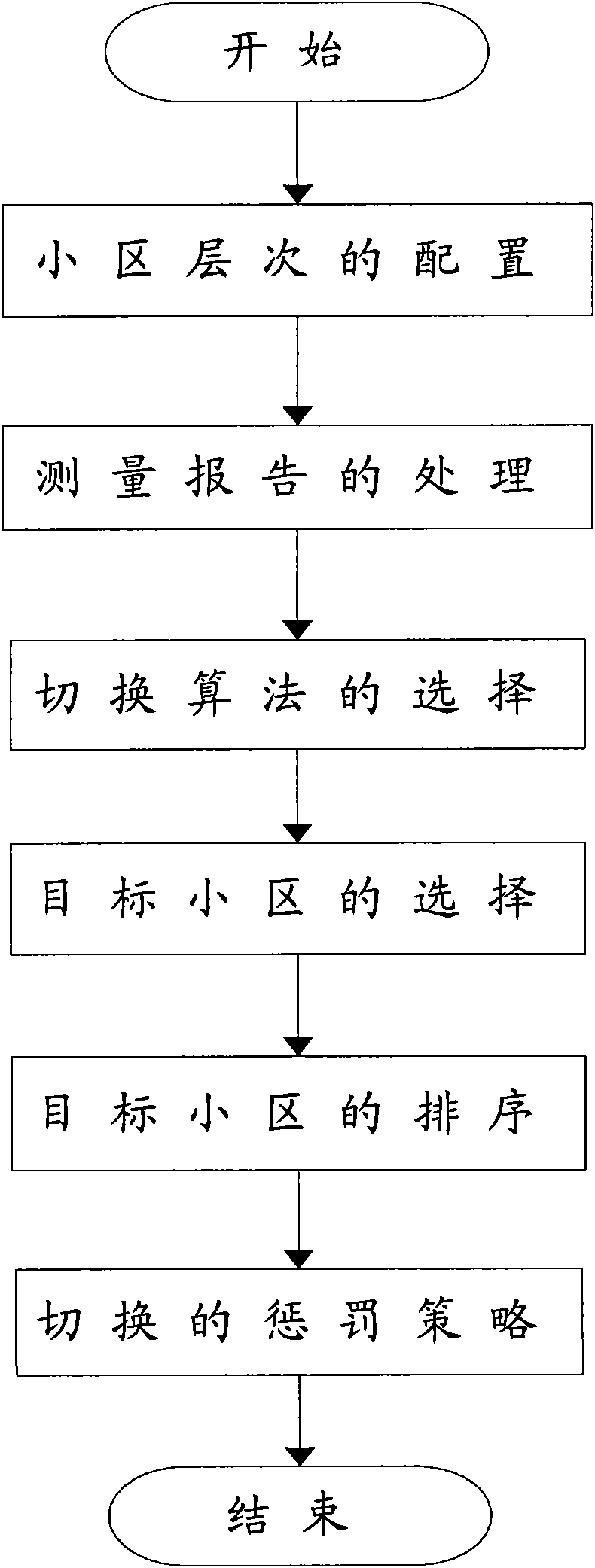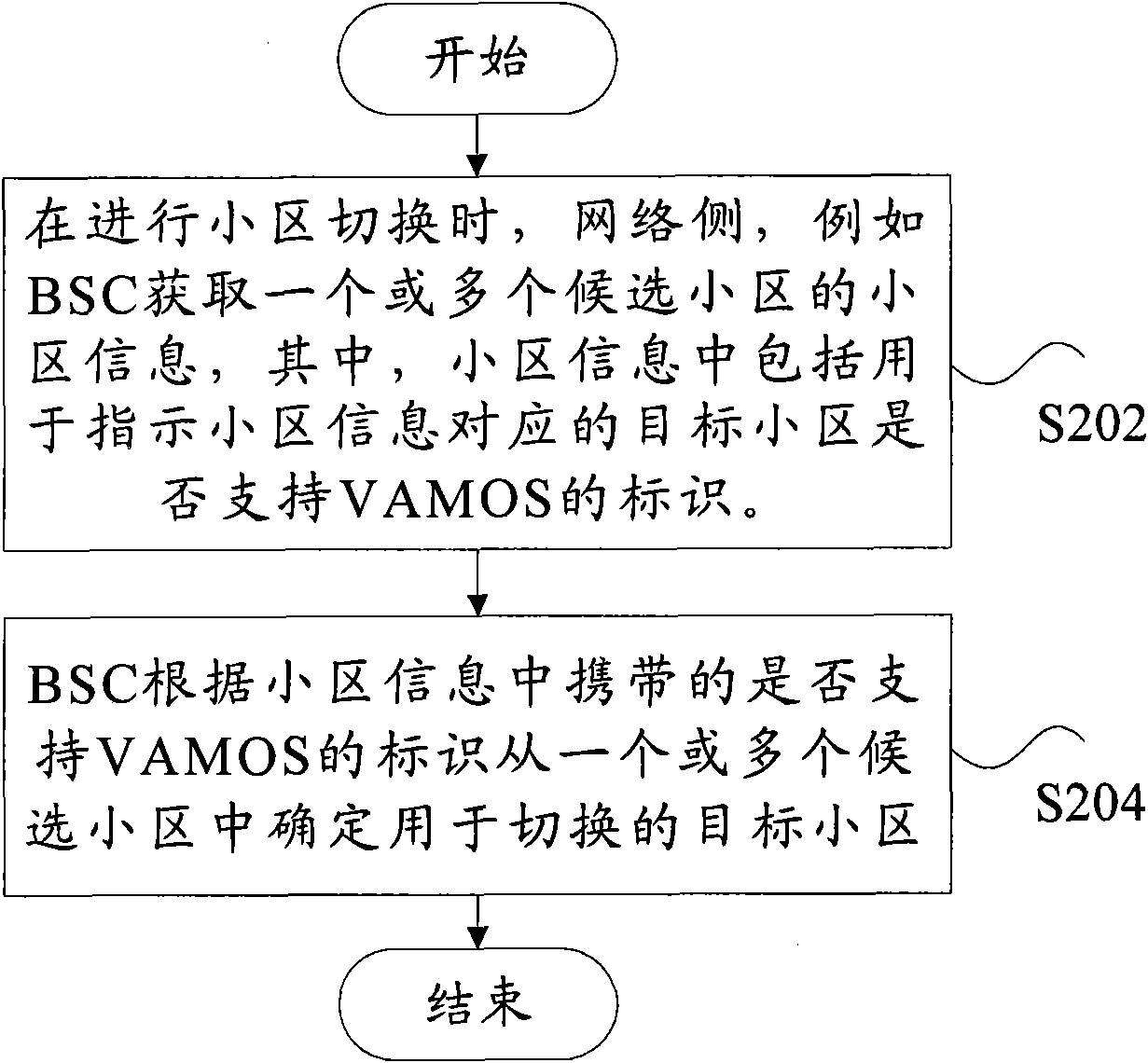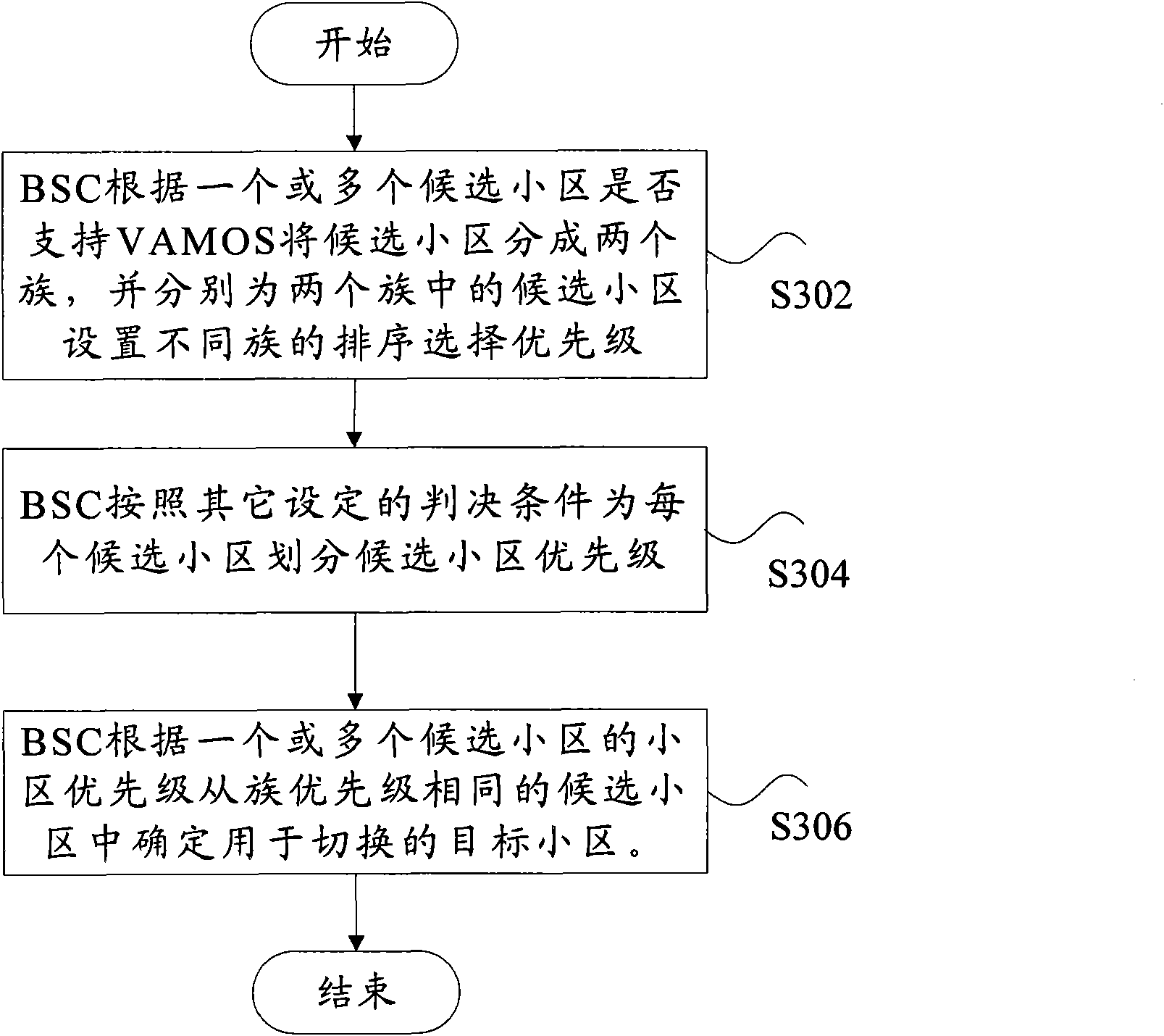Cell switching method and a cell switching device
A cell switching and cell technology, applied in the field of communication, can solve problems such as network quality degradation and network load increase, and achieve the effect of optimizing network resources and improving spectrum utilization
- Summary
- Abstract
- Description
- Claims
- Application Information
AI Technical Summary
Problems solved by technology
Method used
Image
Examples
example 1
[0056] Figure 4 is a flow chart of the method according to Example 1 of the embodiment of the present invention. Such as Figure 4 As shown, the method includes the following steps S402 to S406:
[0057] Step S402, when performing cell handover, the BSC acquires cell information of one or more candidate cells that meet the handover trigger condition, wherein the cell information includes an identifier for indicating whether the candidate cell corresponding to the cell information supports VAMOS.
[0058] In step S404, the BSC divides the candidate cells into two handover groups, Class A and Class B, according to the obtained cell identifiers, and sets the order selection priorities of different classes for the candidate cells in the two groups respectively. Among them, Class A includes all candidate cells that support VAMOS, and the Class B handover family includes all candidate cells that do not support VAMOS. The priorities of Class A and Class B are set according to app...
example 2
[0062] When the number of idle channels of a cell supporting VAMOS is greater than or equal to the number of idle channels of a cell not supporting VAMOS, the terminal supporting VAMOS is preferentially handed over to a candidate cell supporting VAMOS. Figure 5 It is the method flowchart of Example 2 according to the embodiment of the present invention, such as Figure 5 As shown, the method includes the following steps S502 to S510:
[0063] Step S502, when performing cell handover, the BSC divides all candidate cells that meet the handover conditions into two handover families, Class A and Class B, according to the obtained cell IDs during the process of sorting candidate cells, Class A includes all candidate cells that support VAMOS , Class B includes all candidate cells that do not support VAMOS.
[0064] Step S504: Set the family priority. The BSC defines the priority of a candidate cell supporting VAMOS (that is, Class A) as 1, and defines the priority of a candidate ...
example 3
[0072] In the case that the number of idle channels supporting VAMOS cells is smaller than the number of idle channels of cells not supporting VAMOS, it is considered that the terminal supporting VAMOS is handed over to a candidate cell not supporting VAMOS. Figure 6 It is a flow chart of the method according to Example 3 of the embodiment of the present invention, such as Figure 6 As shown, the method includes the following steps S602 to S610:
[0073] Step S602, during cell handover, during the process of sorting candidate cells, the BSC divides all candidate cells that meet the handover conditions into two handover families, Class A and Class B, according to the acquired cell identifiers, Class A includes all candidate cells that support VAMOS, Class B includes all candidate cells that do not support VAMOS.
[0074] Step S604: Set the family priority. The BSC defines the priority of Class A as 0, and the priority of Class B as 1. The priority 1 of a candidate cell that ...
PUM
 Login to View More
Login to View More Abstract
Description
Claims
Application Information
 Login to View More
Login to View More - R&D
- Intellectual Property
- Life Sciences
- Materials
- Tech Scout
- Unparalleled Data Quality
- Higher Quality Content
- 60% Fewer Hallucinations
Browse by: Latest US Patents, China's latest patents, Technical Efficacy Thesaurus, Application Domain, Technology Topic, Popular Technical Reports.
© 2025 PatSnap. All rights reserved.Legal|Privacy policy|Modern Slavery Act Transparency Statement|Sitemap|About US| Contact US: help@patsnap.com



